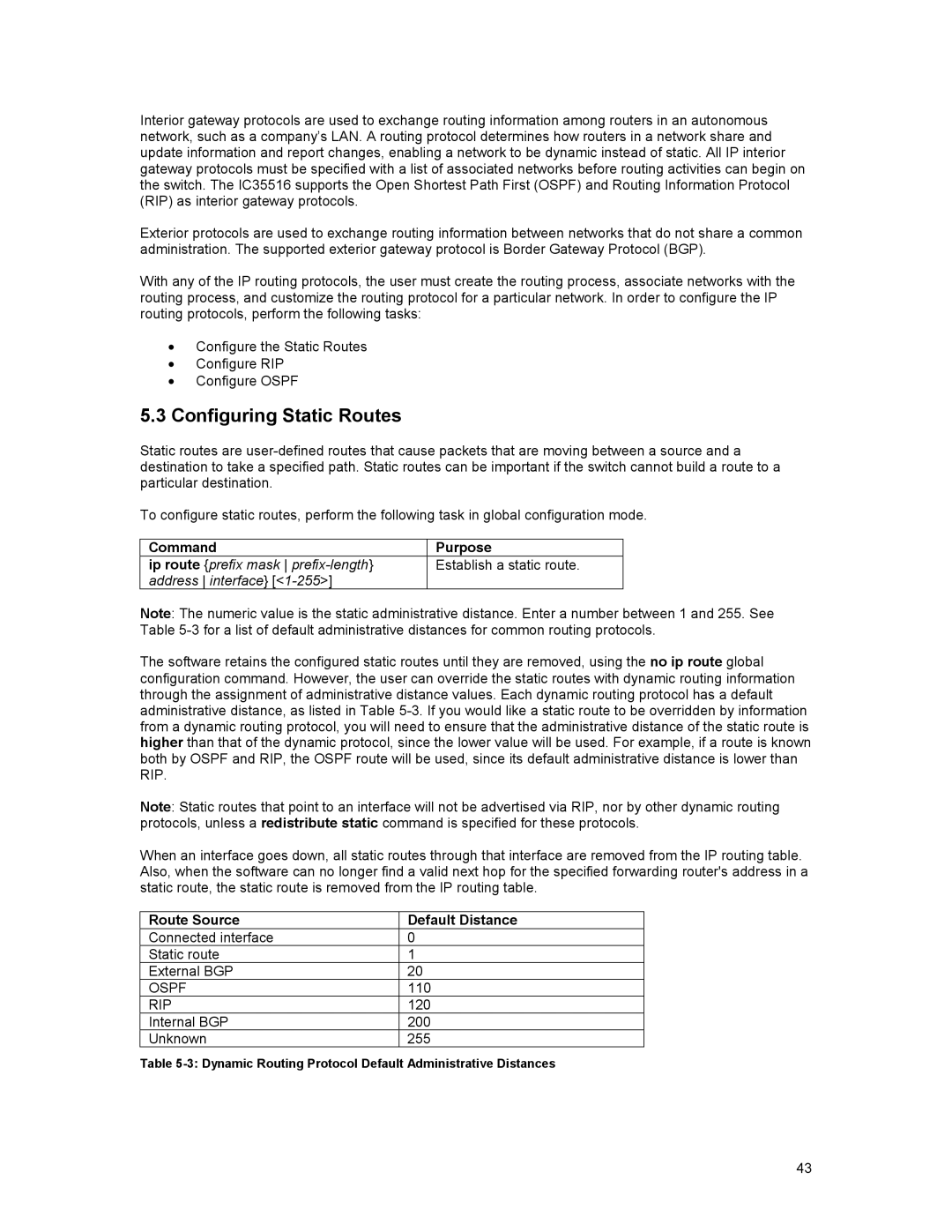Interior gateway protocols are used to exchange routing information among routers in an autonomous network, such as a company’s LAN. A routing protocol determines how routers in a network share and update information and report changes, enabling a network to be dynamic instead of static. All IP interior gateway protocols must be specified with a list of associated networks before routing activities can begin on the switch. The IC35516 supports the Open Shortest Path First (OSPF) and Routing Information Protocol (RIP) as interior gateway protocols.
Exterior protocols are used to exchange routing information between networks that do not share a common administration. The supported exterior gateway protocol is Border Gateway Protocol (BGP).
With any of the IP routing protocols, the user must create the routing process, associate networks with the routing process, and customize the routing protocol for a particular network. In order to configure the IP routing protocols, perform the following tasks:
•Configure the Static Routes
•Configure RIP
•Configure OSPF
5.3Configuring Static Routes
Static routes are
To configure static routes, perform the following task in global configuration mode.
Command | Purpose |
ip route {prefix mask | Establish a static route. |
address interface} |
|
Note: The numeric value is the static administrative distance. Enter a number between 1 and 255. See Table
The software retains the configured static routes until they are removed, using the no ip route global configuration command. However, the user can override the static routes with dynamic routing information through the assignment of administrative distance values. Each dynamic routing protocol has a default administrative distance, as listed in Table
Note: Static routes that point to an interface will not be advertised via RIP, nor by other dynamic routing protocols, unless a redistribute static command is specified for these protocols.
When an interface goes down, all static routes through that interface are removed from the IP routing table. Also, when the software can no longer find a valid next hop for the specified forwarding router's address in a static route, the static route is removed from the IP routing table.
Route Source | Default Distance |
Connected interface | 0 |
Static route | 1 |
External BGP | 20 |
OSPF | 110 |
RIP | 120 |
Internal BGP | 200 |
Unknown | 255 |
Table
43
